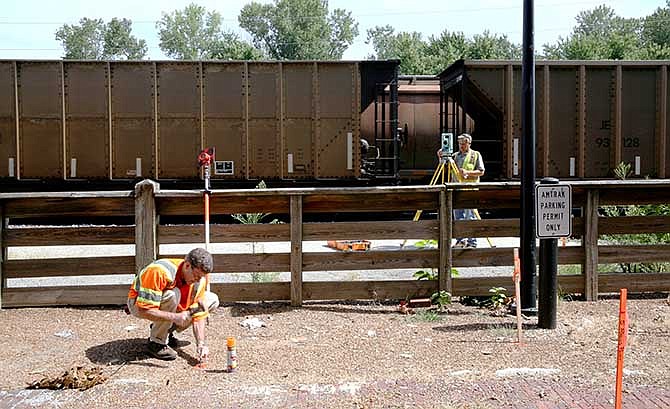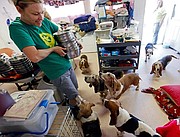Long before Jefferson City's Amtrak station was located in the basement of the Union Hotel and the state museum converted the Lohman Building into an 1800s-style general store, Water Street was a destination and a happening place.
It was the city wharf when steamboats were the fastest mode of transportation. And it was the city's first commercial hub.
As time passed, it was the location of manufacturing, namely the Tweedie Shoe Company. And in the 1970s, the oldest part of the city was preserved as the Jefferson State Historic Site.
More recently, the brick street at the north end of Jefferson Street had been patched too many times and access for pedestrians was questionable in places.
So Jefferson City received a nearly $400,000 Transportation Enhancement grant from the Missouri Department of Transportation, which will bring a new street finish with better drainage, lighting, fencing, expanded long-term parking for Amtrak riders, sidewalks, bicycle racks, and smoother access for ADA compliance to the Amtrak station.
At the end of July, work began to excavate the area.
Along the way, the deconstruction uncovered an 1875-built workhouse. The foundation of the limestone cell walls exposed and the back wall affixed in the side of the cliff under the Governor's Mansion.
Because the entire area is listed on the National Register of Historic Places, Craig Sturdevant and his Environmental Research Center of Missouri Inc. have been monitoring and recording the findings.
"We've run into several features," Sturdevant said.
In front of the Lohman building, they discovered early curbing made from five-feet-long slabs of limestone.
Closer to the river bank, they discovered the prehistoric remnants of a cooking pit.
But it's the workhouse outline and a large, brick cistern east of the train station that has been the most interesting of this site.
The discoveries have not slowed the construction project, likely to be completed by November.
"This was not unexpected," said David Bange, city engineer. A state-funded environmental study indicated these archaeological elements, which is why they hired the Sturdevant and his team.
The workhouse, used until about 1918, was included in turn-of-the-century Sanborn insurance maps.
"We knew it had been there; we didn't know to what extent it might still be there," Bange said.
Sturdevant's team has photographed, measured and otherwise recorded the findings. As the new construction begins, most of the older uses of the site will be covered up again.
"It was some neat stuff, but not necessarily rare," Bange said.
However, the workhouse wall will be exposed, in front of the new, long-term parking lot, Bange said.
The original construction plan called for a modern retaining wall. But given the appearance and structural integrity, the city decided "it would be neat to leave it open for people to see," Bange said.
What this excavation has not uncovered is the burial plot of the cholera victims from the May 1849 landing of the Monroe steamboat carrying Mormon immigrants. In all, 63 deaths from travelers and residents were reported.
These gems from the past will be preserved underneath the road and parking lot of permeable pavers.
Those arriving by train will soon step off onto a raised pedestrian crosswalk, which leads directly to the Union Hotel front door.
"It's not going to look so much different as it will have less offsets and hindrances," Bange said. "The pavers will not detract from the historic nature of the district."
"We want to keep in the theme of what had been there."


